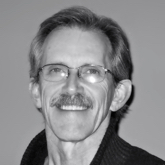Schedule
08:30AM-09:00AM
Registration
- Breakfast Served
09:00AM-12:00PM
Plenary Sessions
Joe Myhra, Seattle Mariners VPDr. Steven Lockley, Harvard University
Stan Walerczyk, Lighting Wizards
Dr. Doug Steel, Photokinetics
Michael Totten, Rocky Mountain Institute
12:00PM-01:15PM
Awards Luncheon
- Lunch Served
Sponsor Presentation
MJ LeeSamjin LED CEO
01:15PM-01:50PM
Safeco Field Tour
- Guided by Seattle Mariners
01:50PM-02:50PM
Workshops
- Healthcare & Aged Care Applications
- School Applications
- Corporate Applications
Guest Speakers
Mike Lambert, KCL EngineeringJonathan Stine, Renton School District
Cody Crawford, Vulcan Group
03:00PM-05:00PM
Plenary Sessions
Ian Ashdown, Lighting Analyst, IncJohn Hwang, Planled
Closing of Conference
Preview of “Ending the Dark Age”Speakers

Gary Chittim, HCLS Conference Host
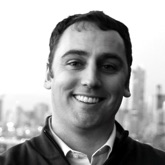
Joe Myhra, Seattle Mariners VP of Ball Park Operations

Dr. Steven Lockley, Harvard Medical School
Dr Lockley has 20 years experience on sleep and circadian rhythm research, and is a specialist in the effects of light on the circadian pacemaker and other ‘non-visual’ responses to light in sighted and blind individuals. He has studied the role of light timing, duration, intensity, wavelength and history and most notably to date, the wavelength sensitivity of the circadian photoreception system, helping to confirm the remarkable earlier discovery of a novel non-rod, non-cone short-wavelength sensitive photoreceptor in ganglion cell layer of the human eye. He is currently ground testing tunable LED lighting on behalf of NASA for installation on the International Space Station. He has published more than 100 original reports, reviews, chapters and editorials on sleep and circadian rhythms and his research is funded by the NIH, NASA and others. He recently co-authored ‘Sleep: A Very Short Introduction’ from Oxford University Press.
Human Centric Lighting: How biology and technology can work together to improve alertness, sleep and health
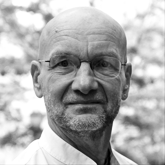
Stan Walerczyk, HCLP, CLEP, HCLS Chair
Past, Present & Future of Human Centric Lighting Society
∙ Why the HCLS was started
∙ How it evolved over the last 3+ years
∙ Officers and advisors
∙ Communication
∙ Its mission, including
∙ Increasing number of HCL projects
∙ Information clearing house
∙ Setting and defining terms
∙ Evaluating how various types of LEDs can be used for tunability
∙ What does the future look like?

Brian Liebel, PE, PRINCIPAL
Spectrally Enhanced Lighting
∙ The role of LBNL, and then our firm, in further developing the science behind SEL.
∙ The trials and tribulations of advancing contentious issues through the IES
∙ The final outcome of TM-24
∙ Lessons learned, and ways in which the HCLS can benefit from these lessons

John Hwang, Planled CEO
A Vision for “Ending the Dark Age”
∙ Research applied designs in key verticals.
∙ Publication of Lighting Playbook with Green Sports Alliance
∙ Production of “Ending the Dark Age”
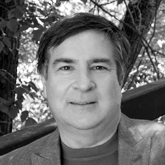
Dr. Doug Steel, PhotoKinetics CSO
Doug has over 30 years of experience in pharmaceutical drug design and discovery, and research project management and implementation. He has formal training in theoretical and applied biotechnology, integrative neuroscience, and brain-environment interactions. He is the author of over 20 publications in scientific journals and books in the areas of drug design, drug discovery, and marine biochemistry. He has also written over 30 technology articles in the popular press.
Dr. Steel received his PhD in Biomedical Sciences from Columbia University P&S. He also held pharmaceutical research positions at The Upjohn Company, CIBA-Geigy, and Syntex Pharmaceuticals.
Light in the Head – what Human Centric Lighting can learn from Neuroscience and apply in the field
Light exposure through the eye is known to exert a powerful effect on the brain and body, comparable to that of many drugs. Yet most forms of light exposure are not regulated as medical devices or therapies. However, new LED illumination and control technologies are starting to reach the market which more accurately replicate daylight exposure. Scientists, doctors, designers, and engineers need to be aware of the unexpected effects of illumination from these lighting systems in order to anticipate beneficial and detrimental effects upon patients and staff.
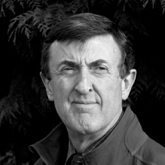
Jonathan Stine, Renton School District Energy Program Manager
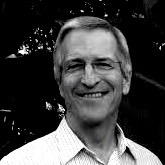
Michael Totten, Rocky Mountain Institute Senior Fellow
HCL – Gateway to Higher Performing, Smarter Assets – Presented with Michael Totten
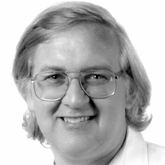
Ian Ashdown, Lighting Analysis Incorporated Chief Scientist
He is an Illuminating Engineering Society Fellow and an International Lighting Commission (CIE) Advisory member. With a Bachelor’s degree in electric engineering and a Master’s degree in computer science, he holds more than 120 patents and patents pending, mostly with Philips and Cooledge Lighting. He has written 42 academic papers, 91 articles, 6 book chapters, and a book – Radiosity: A Programmer’s Perspective – that today is the foundation of Lighting Analysts’ AGi32 and ElumTools lighting design and analysis software.
His current research interests include circadian-based lighting design and analysis. In particular, the capabilities of today’s software tools for architectural lighting design need to be extended to encompass spectral power distributions, non-visual spatial responsivity of the human eye, and temporal aspects related to human-centric lighting.
Melanopic Illuminance: Designing a Virtual Photometer
1) Spectral and spatial responsivity;
2) Spectral power and reflectance distributions;
3) Temporal response; and
4) Climate-based daylight integration.
These requirements in turn will necessarily redefine how architectural lighting design is performed using software tools.
